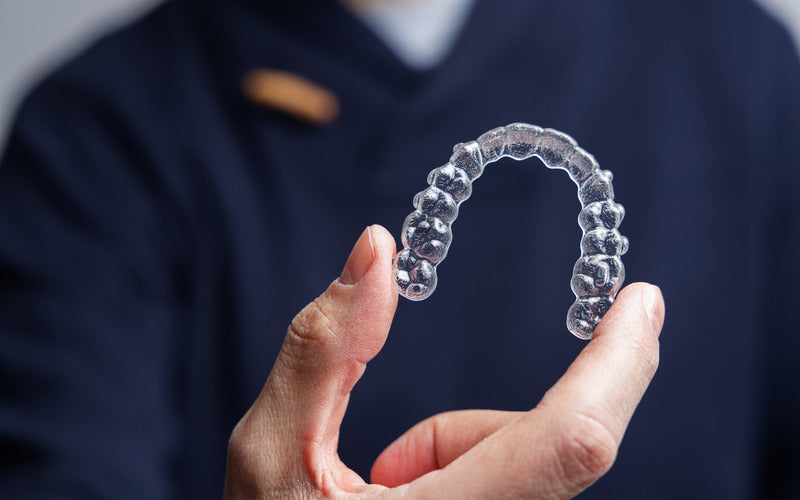Braces vs. Invisalign: Choosing the Right Orthodontic Option
A beautiful smile is a powerful asset that boosts self-confidence and enhances one's overall appearance. For individuals seeking to improve their smiles, orthodontic treatments offer effective solutions. Traditional braces and Invisalign are two popular options designed to align teeth and correct various orthodontic issues.
Related Topics (Sponsored Ads):
But, with different approaches and advantages, the question arises: "Which is better?" In this comprehensive article, we will explore the differences between braces and Invisalign, their pros and cons, and the factors to consider when choosing the best treatment for your specific needs.
What Are Braces?
Traditional braces are the most well-known and time-tested orthodontic treatment. They consist of metal brackets attached to the teeth and wires that apply gentle pressure to gradually move the teeth into their desired positions.

Pros of Braces:
Suitable for all types of orthodontic issues, from simple to complex.
Generally, more effective for severe cases, such as correcting significant misalignments.
No risk of losing or misplacing the aligners since they are permanently fixed to the teeth.
Cons of Braces:
Visible appearance: Some people may feel self-conscious about the metal brackets and wires.
Potential discomfort: Braces can cause temporary discomfort or soreness after adjustments.
Maintenance: Special care is required to clean around the brackets and wires properly.
What Is Invisalign?
Invisalign is a modern, discreet orthodontic treatment that uses clear, removable aligners to gradually shift teeth into their correct positions. The aligners are custom-made for each patient and are virtually invisible when worn.
Pros of Invisalign:
Aesthetically pleasing: Invisalign aligners are transparent and nearly invisible.
Removable: The aligners can be taken out for eating, brushing, and special occasions.
Comfort: Invisalign aligners are smooth and generally cause less irritation to the cheeks and gums.
Cons of Invisalign:
Compliance: Success depends on the patient's commitment to wearing the aligners for the prescribed amount of time each day.
Limited for complex cases: Invisalign may not be suitable for severe orthodontic issues.
Cost: Invisalign treatment can be more expensive than traditional braces.
Treatment Approach
The fundamental difference between braces and Invisalign lies in their treatment approach. Braces use brackets and wires to move teeth, whereas Invisalign relies on a series of clear aligners.
Visibility
As mentioned earlier, braces are noticeable due to their metal brackets and wires, which may be a concern for some individuals, especially teenagers and adults. In contrast, Invisalign aligners are transparent, making them significantly less visible.
Removability
One of the main advantages of Invisalign is that the aligners are removable. Patients can take them out during meals, which means no food restrictions, and they can maintain better oral hygiene. On the other hand, braces are fixed to the teeth throughout the treatment duration.
Comfort
Invisalign aligners are generally considered more comfortable than braces, as they have no sharp brackets or wires that can irritate the mouth. However, some people may experience temporary discomfort when changing to a new set of aligners.
Suitability and Effectiveness
Braces are suitable for patients of all ages and can effectively treat a wide range of orthodontic issues, including crowded teeth, gaps, overbites, underbites, and crossbites. They provide precise control over tooth movement, making them highly effective for complex cases.
Invisalign is a great option for milder to moderate orthodontic issues, such as mild crowding or spacing problems. It may not be suitable for severe cases or complex bite issues, where braces might be a more appropriate choice.
Treatment Duration
The duration of braces treatment varies depending on the complexity of the case and the patient's response to treatment. On average, braces are worn for 18 months to two years.
Invisalign treatment duration also depends on the complexity of the case, but it may be slightly shorter compared to braces. Treatment typically lasts between 12 to 18 months.
Cost Considerations
The cost of braces can vary depending on factors such as the type of braces (traditional metal, ceramic, lingual), the duration of treatment, and the orthodontist's expertise. Traditional metal braces tend to be more affordable compared to other options.
Invisalign treatment is generally more expensive than traditional braces due to the technology involved and the custom-made aligners. However, the cost can vary depending on the complexity of the case and the location of the orthodontic practice.
Conclusion
In conclusion, both braces and Invisalign offer effective solutions for correcting orthodontic issues and achieving a straighter smile. The choice between the two treatments depends on individual preferences, the severity of the orthodontic problem, budget considerations, and the advice of a qualified orthodontist. It is essential to consult with a professional to determine the best option that aligns with your specific needs and goals. Ultimately, whether you opt for the tried-and-true approach of braces or the discreet convenience of Invisalign, the end result will be a confident, beautiful smile to be proud of.




